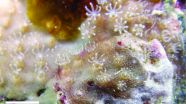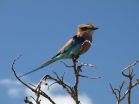(Press-News.org) A group of scientists led by Dr Kara Hoover of the University of Alaska Fairbanks and including Professor Matthew Cobb of The University of Manchester, has studied how our sense of smell has evolved, and has even reconstructed how a long-extinct human relative would have been able to smell.
The sense of smell plays a decisive role in human societies, as it is linked to our taste for food, as well as our identification of pleasant and unpleasant substances.
We have about 4 million smell cells in our noses, divided into about 400 different types. There is tremendous genetic variability within and between populations for our ability to detect odours. Each smell cell carries just one type of receptor or 'lock' on it - the smell floats through the air, fits into the 'lock' and then activates the cell.
Most receptors can detect more than one smell, but one, called OR7D4, enables us to detect a very specific smell called androstenone, which is produced by pigs and is found in boar meat. People with different DNA sequences in the gene producing the OR7D4 receptor respond differently to this smell - some people find it foul, some sweet, and others cannot smell it at all. People's responses to androstenone can be predicted by their OR7D4 DNA sequence, and vice versa.
Professor Cobb from The University of Manchester's Faculty of Life Sciences and the other researchers studied the DNA that codes for OR7D4 from over 2,200 people from 43 populations around the world, many of them from indigenous groups. They found that different populations tend to have different gene sequences and therefore differ in their ability to smell this compound.
For example, they found that populations from Africa - where humans come from - tend to be able to smell it, while those from the northern hemisphere tend not to. This shows that when humans first evolved in Africa, they would have been able to detect this odour.
Statistical analysis of the frequencies of the different forms of the OR7D4 gene from around the world suggested that the different forms of this gene might have been subject to natural selection.
One possible explanation of this selection is that the inability to smell androstenone was involved in the domestication of pigs by our ancestors - andostroneone makes pork from uncastrated boars taste unpleasant to people who can smell it. Pigs were initially domesticated in Asia, where genes leading to a reduced sensitivity to androstenone have a high frequency.
The group also studied the OR7D4 gene in the ancient DNA from two extinct human populations, Neanderthals and the Denisovans, whose remains were found at the same site in Siberia, but who lived tens of thousands of years apart.
The group found that Neanderthal OR7D4 DNA was like our own - they would have been able to smell androstenone. The Denisovans are a mysterious group of our extinct relatives - we do not know what they looked like, and they are known from only one tooth and a finger bone, from different individuals.
Their DNA showed a unique mutation, not seen in humans or Neanderthals, that changed the structure of the OR7D4 receptor.
Team-member Hiroaki Matsunami at Duke University in the USA reconstructed the Denisovan OR7D4 and studied how this tiny part of a long-extinct nose responded to androstenone. It turned out that despite the mutation, the Denisovan nose functioned like our own. Both of our close relatives, like our early human ancestors, would have been able to detect this strange smell.
This research shows how global studies of our genes can give insight into how our taste for different foods may have been influenced by variation in our ability to smell, and, excitingly, show that it is possible to see back into deep evolutionary time and reconstruct the sensory world of our distant ancestors.
INFORMATION:
The research was carried out by scientists from the University of Alaska Fairbanks, State University of New York, Duke University and The University of Manchester, and is published in the journal Chemical Senses.
http://chemse.oxfordjournals.org/content/early/2015/06/13/chemse.bjv030.full.pdf
CORVALLIS, Ore. - Engineers at Oregon State University have invented a way to fabricate silver, a highly conductive metal, for printed electronics that are produced at room temperature.
There may be broad applications in microelectronics, sensors, energy devices, low emissivity coatings and even transparent displays.
A patent has been applied for on the technology, which is now available for further commercial development. The findings were reported in Journal of Materials Chemistry C.
Silver has long been considered for the advantages it offers in electronic devices. ...
Research conducted in Okinawa, Japan, by graduate student Yu Miyazaki and associate professor James Davis Reimer from the University of the Ryukyus has found a very unusual new species of octocoral from a shallow coral reef in Okinawa, Japan. The new species can be considered a "living fossil", and is related in many ways to the unusual blue coral. The study was published in the open access journal ZooKeys.
Unlike scleractinians, most octocorals lack a hard skeleton, and therefore many have the common name "soft coral". One exception is the endangered genus Heliopora, ...
COLUMBIA, Mo. - For years, news organizations that post content on the Internet have allowed readers to leave comments about stories. Often, these readers' comments become a forum for political debates and other communication that the news organizations do not consider important to their journalistic practices. Now, researchers from the University of Missouri School of Journalism have found that editors and owners of news organizations may want to pay more attention to what their readers are saying about their news stories in order to better serve their consumers. Timothy ...
CLEMSON, S.C. -- Poor sleep habits can have a negative effect on self-control, which presents risks to individuals' personal and professional lives, according to Clemson University researchers.
In a study titled "Interactions between Sleep Habits and Self-Control," Clemson psychologists concluded a sleep-deprived individual is at increased risk for succumbing to impulsive desires, inattentiveness and questionable decision-making.
"Self-control is part of daily decision-making. When presented with conflicting desires and opportunities, self-control allows one to maintain ...
PROVIDENCE, R.I. [Brown University] -- Everyone knows that exercise generally helps the cardiovascular system, but much remains unknown about how the benefits arise, and what to expect in different people who exercise to improve their health. To gain a more precise understanding of how exercise improves health and whom it helps most, researchers analyzed the results of 160 randomized clinical trials with nearly 7,500 participants. The review appears open access in the Journal of the American Heart Association.
"Our meta-analysis is one of the first studies to systematically ...
Study found 35% fewer bird species in agricultural habitats
Researchers say farmland is a poor substitute for natural areas but simple improvements could make a difference to biodiversity conservation
Research led by the University of Exeter has found a substantial reduction in bird species living in cultivated mango orchards compared to natural habitats in Southern Africa. The results, which are published today in the journal Landscape Ecology, highlight the value of assessing habitats prior to land use change to predict the impact of agriculture on biodiversity.
The ...
Wind turbines could be installed under some of the biggest bridges on the road network to produce electricity. So it is confirmed by calculations carried out by a European researchers team, that have taken a viaduct in the Canary Islands as a reference. This concept could be applied in heavily built-up territories or natural areas with new constructions limitations.
The Juncal Viaduct, in Gran Canaria, has served as a reference for Spanish and British researchers to verify that the wind blowing between the pillars on this kind of infrastructures can move wind turbines ...
Amsterdam, July 2, 2015 - Biologically active molecules released by digesting bread and pasta can survive digestion and potentially pass through the gut lining, suggests new research. The study, published in the journal of Food Research International, reveals the molecules released when real samples of bread and pasta are digested, providing new information for research into gluten sensitivity.
The research is in vitro - in the lab rather than in humans - and the authors of the study, from the University of Milan, Italy, say that more research is needed to determine what ...
With the number of individuals affected by cognitive decline expected to rise over the next few decades, investigating its potential causes is of major public health interest. Two new studies published today in the American Journal of Hypertension delve into the connection between hypertension and cognitive decline.
Racial disparity in cognitive and functional disability in hypertension and its mortality
Researchers assessed the prevalence and racial disparity of subjective cognitive and functional limitations and their impact on mortality in the hypertensive US ...
This news release is available in Japanese.
Researchers from the National Astronomical Observatory of Japan (NAOJ), the University of Tokyo and other institutions have begun a wide-area survey of the distribution of dark matter in the universe using Hyper Suprime-Cam, a new wide-field camera installed on the Subaru Telescope in Hawai'i. Initial results from observations covering an area of 2.3 square degrees on the sky toward the constellation Cancer revealed nine large concentrations of dark matter, each the mass of a galaxy cluster. Surveying how dark matter ...




